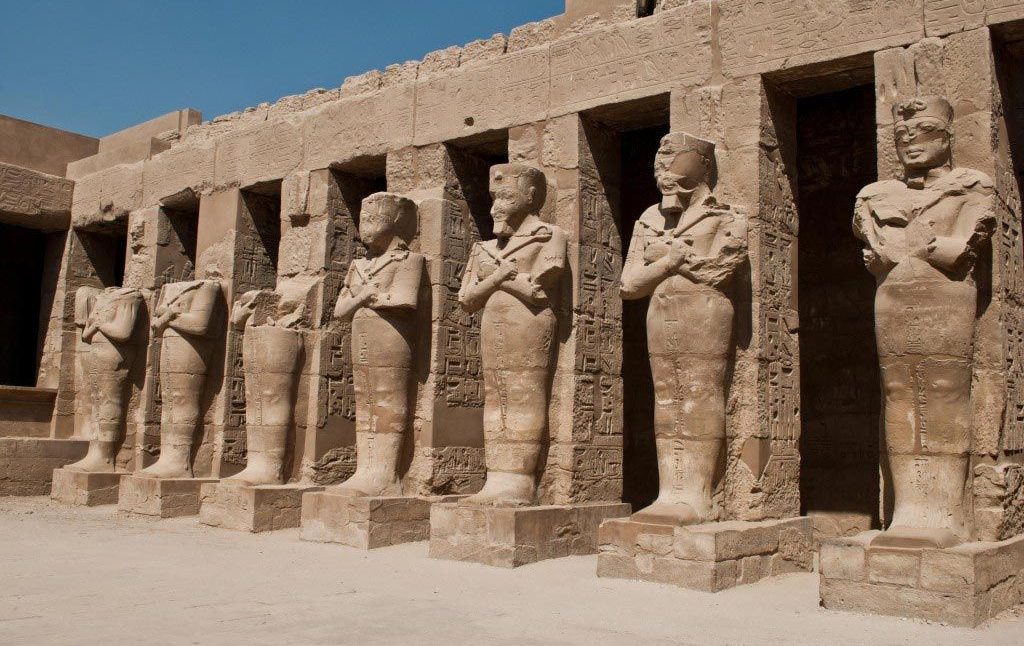Ancient Egyptian Statues: Guardians of Eternity and Symbols of Power
Ancient Egypt, one of the world’s oldest civilizations, is renowned for its monumental architecture, rich mythology, and artistic achievements. Among these artistic marvels, statues hold a prominent place. They served not only as decorative art but also as vital components of religious practices, expressions of power, and representations of the afterlife. This article explores the significance, types, techniques, symbolism, and enduring legacy of ancient Egyptian statues.
Historical Context
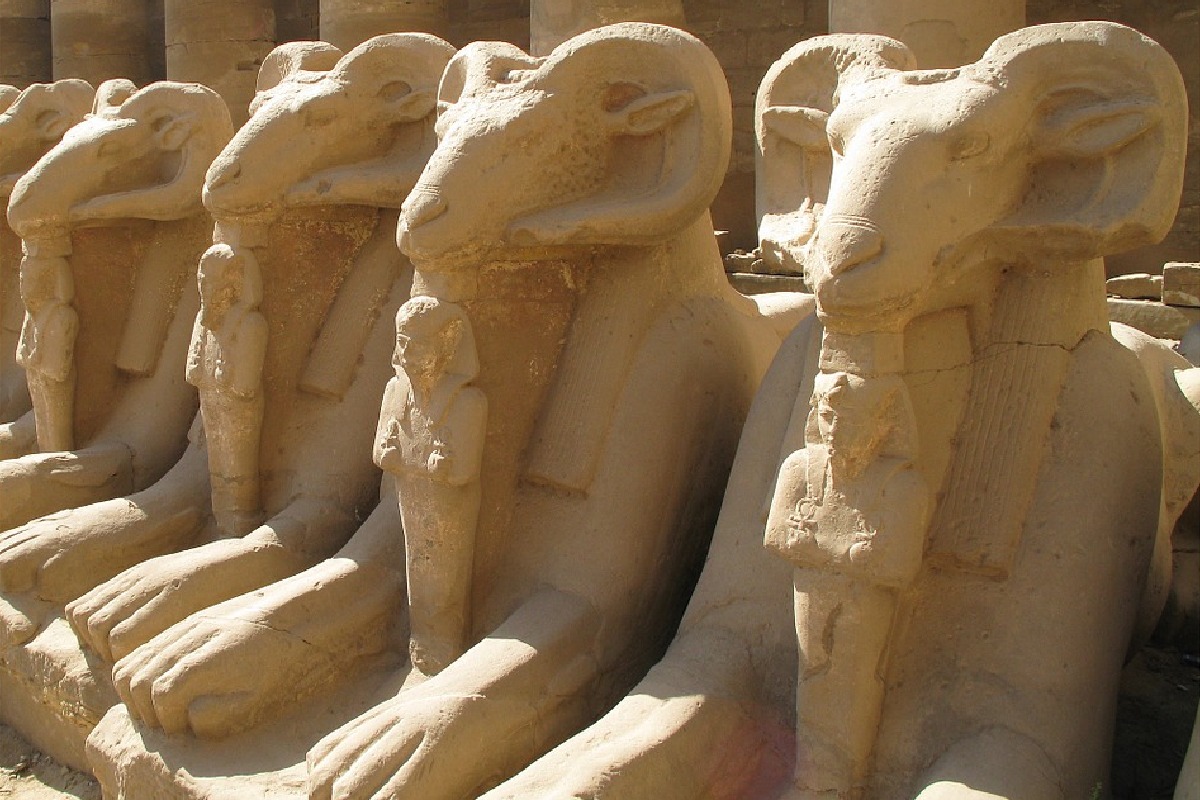
Ancient Egyptian civilization thrived along the Nile River from around 3100 BCE until the conquest of Alexander the Great in 332 BCE. Throughout this extensive period, the Egyptians developed a unique artistic style that reflected their religious beliefs, political structures, and social hierarchies. They played a crucial role in this cultural tapestry, serving various functions across different eras.
The early dynastic period saw the emergence of tomb art, where statues were created to serve the deceased in the afterlife. As the civilization progressed, especially during the Old, Middle, and New Kingdoms, the scale and sophistication of these statues evolved, mirroring the political and spiritual dynamics of the time.
Functions of Statues
1. Religious Significance
Statues were deeply entwined with ancient Egyptian religion. They were not merely representations but were believed to embody the ka (spirit) of the person or deity they depicted. This made statues crucial in religious rituals. In temples, Figures of gods and goddesses were central to worship, serving as physical vessels for divine presence. Priests performed daily rituals before these Sculptures, offering food, incense, and prayers to maintain the favor of the gods.
2. Funerary Practices
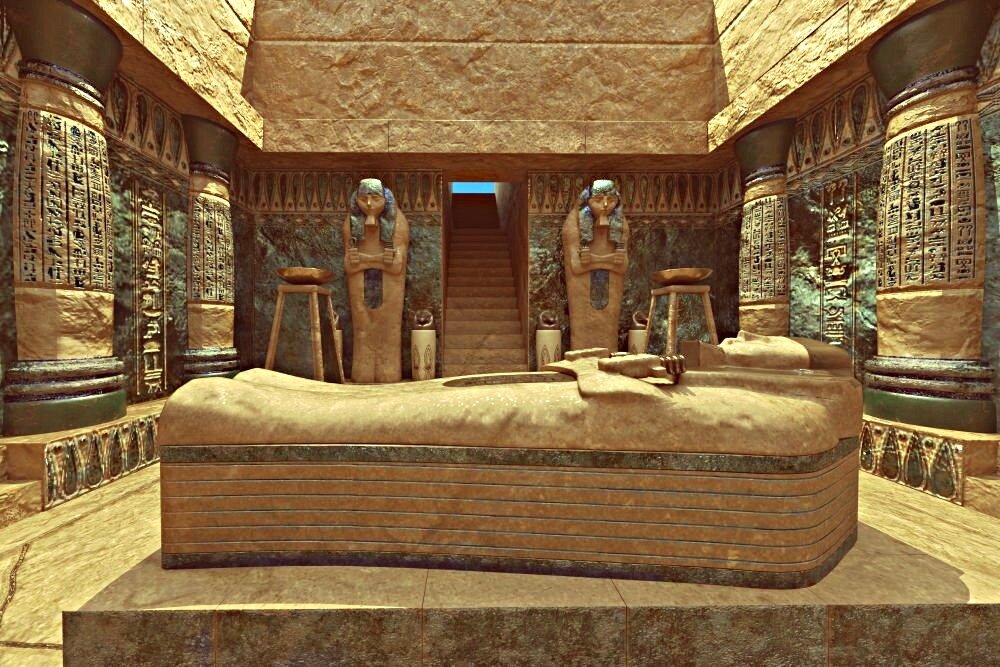
In the realm of funerary practices, statues served as companions for the deceased. Tombs were often equipped with statues of the deceased, crafted to ensure their continued existence in the afterlife. These, known as shabtis, were believed to perform labor on behalf of the deceased, allowing them to enjoy a comfortable afterlife. The attention to detail in these figures reflects the Egyptians’ belief in the importance of individual identity and continuity beyond death.
3. Political Propaganda
They were also instruments of political power. Pharaohs commissioned colossal Figures to showcase their might and divine authority. These representations often portrayed the pharaoh in a seated or standing position, emphasizing their role as a god-king. The grandeur of these statues was a means of asserting dominance, both within Egypt and to neighboring territories. The Great Sphinx of Giza, with its lion’s body and human head, symbolizes the pharaoh’s strength and intellect, serving as a guardian of the Giza plateau.
Types of Statues
1. Pharaoh Statues
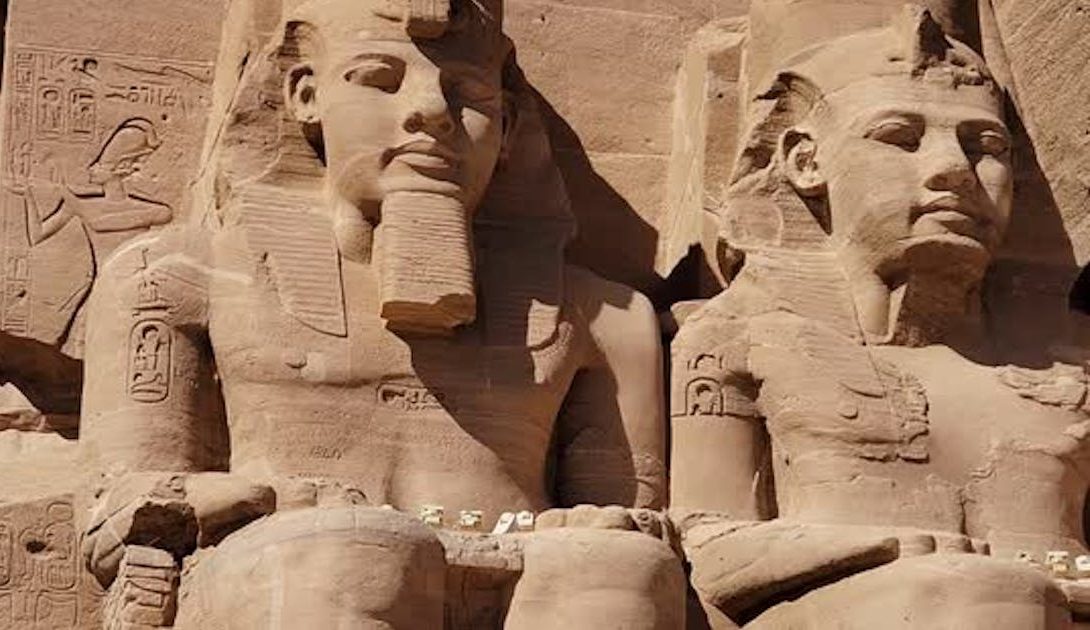
Statues of the pharaohs were often monumental in scale and detail. The seated statues, for example, were designed to project an image of stability and authority. These typically featured the pharaoh wearing the nemes headdress and holding symbols of power, such as the crook and flail. Iconic examples include the colossal Sculptures of Ramses II at Abu Simbel, which stand as testament to the pharaoh’s power and divine status.
2. Deity Statues
Statues of gods and goddesses were integral to religious practice. Each deity had distinct attributes, often reflected in their Sculptures. For instance, Isis was commonly depicted as a woman with a throne-shaped headdress, while Horus was portrayed as a falcon. These were housed in temples and treated with great reverence, often adorned with offerings and rituals to invoke their blessings.
3. Funerary Statues
Funerary statues, including shabtis, were crafted to serve the deceased in the afterlife. These smaller figures were often placed in tombs and depicted the deceased performing agricultural or domestic tasks. The intricate designs and use of vibrant colors were intended to create a lifelike presence that would endure beyond death.
Artistic Techniques
1. Materials
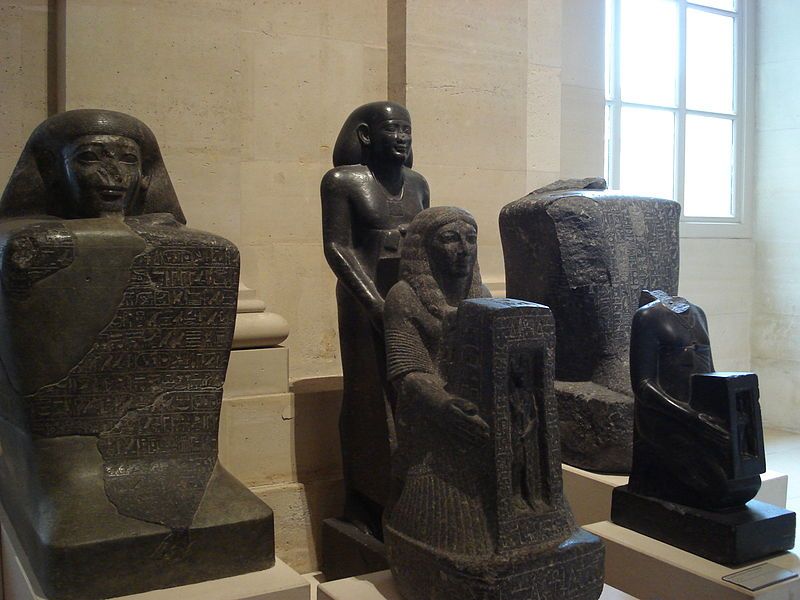
The materials used in statue-making varied according to the intended purpose and context. Stone, particularly limestone, granite, and basalt, was favored for its durability and grandeur. Wood was commonly used for smaller figures, particularly in funerary contexts, as it allowed for more intricate detailing. Faience, a glazed ceramic material, was also popular for smaller amulets and figurines.
2. Craftsmanship
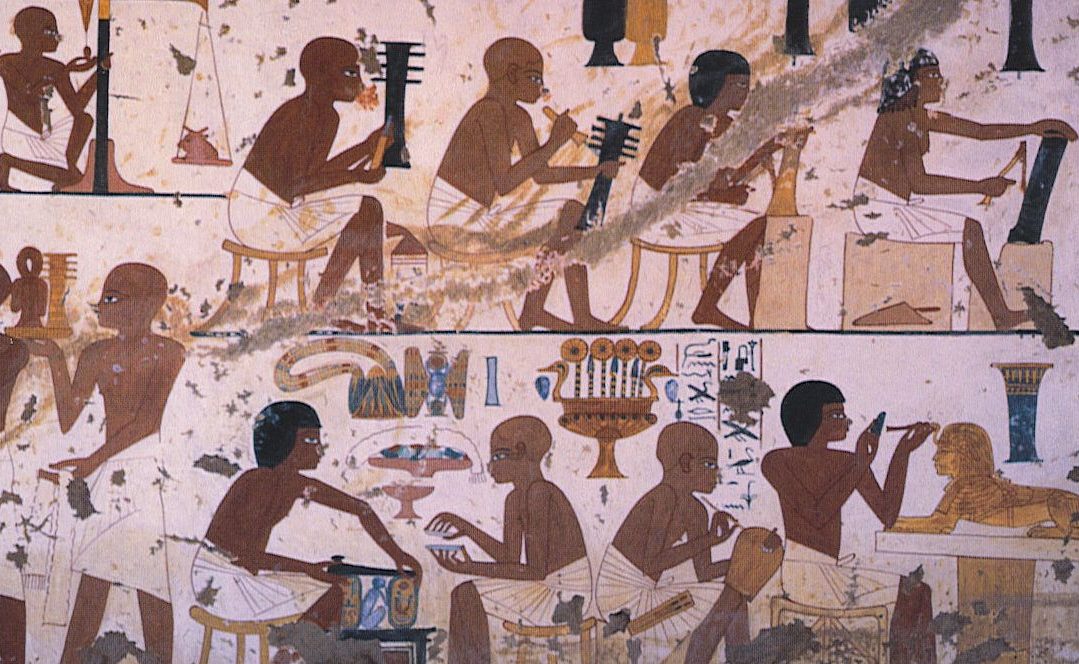
The craftsmanship of ancient Egyptian statues was highly sophisticated. Artists adhered to strict conventions, ensuring that proportions were consistent and that figures exhibited a sense of balance and stability. Carving from a single block of stone was common for monumental statues, while smaller figures were sometimes modeled in clay before being cast in metal or stone.
3. Iconography
Iconography played a vital role in the artistic representation of statues. Specific postures, gestures, and attributes were carefully chosen to convey meaning. For example, a pharaoh might be depicted with one arm raised in a gesture of authority, while a deity could be shown in a position that signifies their protective role. Hieroglyphs often accompanied these statues, providing context and enhancing their significance.
Symbolism of Statues
The symbolism embedded in ancient Egyptian figures reflects the civilization’s beliefs and values.
1. Divine Kingship
Statues of pharaohs emphasized their divine status. The portrayal of the pharaoh in a seated position with a serene expression conveyed a sense of stability and order. The use of specific symbols, such as the ankh (symbol of life) and the crook and flail, reinforced the notion of divine kingship. These were not merely representations; they were assertions of the pharaoh’s right to rule, believed to be ordained by the gods.
2. The Afterlife
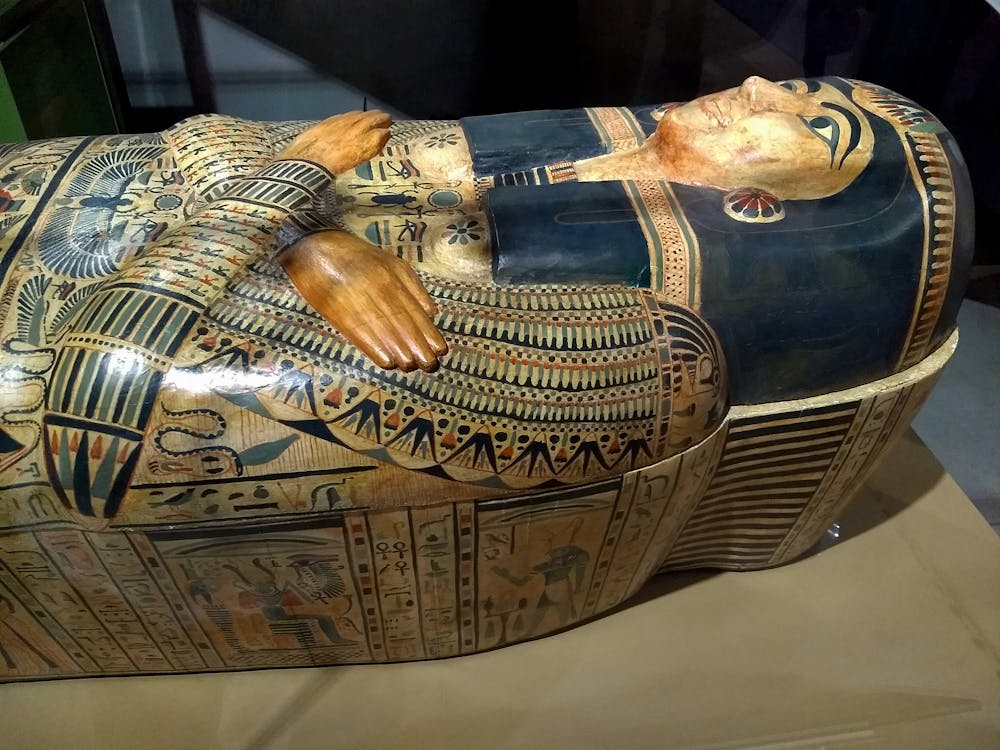
The significance of funerary figures lies in their association with the afterlife. The meticulous crafting of these figures reflected a profound belief in the continuity of existence beyond death. By ensuring that the deceased had their likeness preserved, Egyptians sought to maintain individual identity in the afterlife, allowing the ka to recognize and inhabit the figure.
3. Protection and Blessings
Statues of deities served as protectors and sources of blessings. Their presence was believed to create a divine atmosphere, essential for the well-being of the community and the pharaoh. Rituals performed in front of these statues were thought to invoke the gods’ favor, ensuring protection from chaos and disorder.
The Legacy of Ancient Egyptian Statues
The legacy of ancient Egyptian figures extends far beyond their physical presence. They have influenced countless generations of artists and architects, leaving an indelible mark on art history. The techniques and styles developed by ancient Egyptian craftsmen continue to inspire modern artists.
1. Cultural Influence
The symbolism and artistry of ancient Egyptian figures have permeated various aspects of culture, from literature to film. The allure of ancient Egypt, with its mysteries and grandeur, has inspired countless works of art and popular culture. Statues serve as iconic representations of this ancient civilization, drawing visitors to museums and archaeological sites.
2. Archaeological Discoveries
Ongoing archaeological discoveries continue to shed light on the importance of statues in ancient Egyptian society. Excavations of temples and tombs have unveiled a wealth of statues, each contributing to our understanding of the civilization’s beliefs and practices. These discoveries not only enhance our knowledge of ancient Egypt but also raise questions about the society’s complex relationships with power, religion, and mortality.
3. Modern Interpretations
Contemporary artists often draw inspiration from ancient Egyptian figures, reinterpreting their themes and techniques. The exploration of identity, power, and the afterlife remains relevant, resonating with modern audiences. Artists utilize the aesthetics of ancient Egypt to challenge contemporary notions of representation and memory, highlighting the enduring significance of these ancient works.
Final Thoughts:
Ancient Egyptian statues are more than just artistic achievements; they are profound reflections of a civilization that revered the divine, honored its rulers, and believed in the continuity of existence beyond death. Through their artistry, symbolism, and spiritual significance, these continue to captivate our imagination and offer insight into a society rich in culture and complexity. As we study and appreciate these remarkable creations, we gain a deeper understanding of the ancient Egyptians’ worldview, their values, and their enduring legacy in the tapestry of human history.

